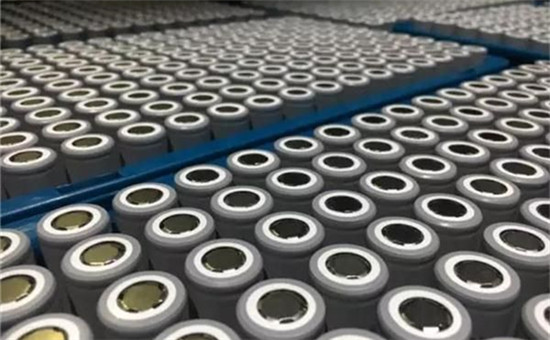Prolong Lithium Battery Life Methods
Dec 09, 2019 Pageview:1263
It is amusing how many people get confused when talking about lithium batteries. What one needs to understand is that there are very many batteries that have the name lithium in them yet they are not particularly what you think they are. This makes it important first to discuss what lithium batteries are before going further into extending their life.
First, many will think of lithium-ion batteries. Lithium batteries, in this LIBs, are not the same as Lithium-Ion, Li-Ion batteries.
LIBs are primary cells. This means they are non-rechargeable batteries that you use ones and dispose of or recycle where possible. They are mostly used to power small electronic devices. The most common forms of lithium batteries are the coin/button cells found in wristwatches, remote controls, and similar items.
Today, lithium battery manufacturers are also producing AA and AAA sizes to compete with alkaline batteries. This is where you find batteries like energizer made for high-drain devices. They are mostly used in digital cameras and some RCs.
Lithium-ion batteries, on the other hand, are secondary batteries. They can be recharged and used for a long time before dying out. These are batteries you find in your Smartphone, laptop RC, and similar devices. With the emergence of Electric Vehicles, the manufacture of these batteries has almost tripled in number.
Why does lithium battery degrade?
All batteries degrade. And lithium batteries, however powerful they are, cannot last forever. Even when they are not in use, you will discover degradation. In other words, their life-span, whether just sitting on a shelf or running in a digital camera is more or less the same.
According to William C. Chueh, as an assistant professor at Stanford University, batteries, in general, are electrode charged with negative and positive energy separated by a separator. He performs research on SLAC to discover what batteries are. Chueh states that the combination above creates high and low energy areas to allow for the flow of lithium ions.
At first, researchers thought lithium was the best metal for this. It was seen to be anisotropic in the states described above. Later, it came out that was not the case as there is not much of a difference in how the metal flows within the battery.
In other words, lithium to creates a messy path as it moves from one side of the cell to the other. It, therefore, creates a hot point in the battery, which damages the battery. This process, in effect, reduces the capacity of the battery to store power. In simple terms, heat is the number one enemy to batteries. This leads to lithium batteries losing energy faster.
Another very important aspect of power storage in batteries is that the lithium does not operate in a vacuum but a liquid. This may explain why the batteries start degrading the moment they leave the factory. Compared to alkaline batteries, lithium batteries have a longer shelf of up to 15 years. During this time, they will be slowly losing their power.
The battery component remains active even when they are not in use. In other words, oxidation, a reaction that creates oxygen particles with the cells, is a continuous process. It begins immediately the battery leaves the factory and continues for its entire life.
It may mean, therefore, that your LIB is slowly losing power, wherever you are storing it. It does not matter whether you are using or not.
Degradation is one of the reasons you will find some batteries you buy lasting longer than others. When you buy lithium batteries, you should check the date of manufacture first. Perhaps it has stayed on the shelf for too long and lost most of its capacity.
How much longer does lithium battery last?
Lithium batteries and alkaline batteries are the two major types of primary cells. The major difference is that Lithium is a lighter metal that makes the batteries seem superior in terms of power output and longevity.
Compared to alkaline, therefore, LIBs last much longer. This, however, may depend on the device they are used in. In terms of shelf-life expectancy, alkaline batteries can give you 7 to 10 years, whereas lithium batteries can go from 10 to 15 years. This explains why they are most preferred to small power devices.
Lithium batteries, as mentioned above, are used for high-drain devices. Alkaline batteries, on the other hand, can be found in low-drain and some medium-drain devices. For instance, lithium batteries can give you 100 to 200 flash photos, whereas an alkaline battery will give you only 10 to 20 flash photos. This feature makes lithium batteries a better asset in terms of finding the best use cases.
The nominal voltage of LIBs is 3.0 Volts, while that of an alkaline battery is 1.5. In essence, this means LIBs last twice as much as alkalines. Where you get one week of digital camera operation with an alkaline battery, you can be sure to get three weeks of the same. If you are planning to go for a vacation therefore and take those memorable pictures, you better find yourself some strong juice for the camera.
How do you prolong the lithium battery life?
As explained above, how long your battery is going to last depends on how well you use them. For example, we already know the number one enemy to batteries is heat, therefore ensure you control the environment under which you use the device. Whenever you feel like things are getting a bit hot, try to cool it down by discontinuing use. Just give the battery a few minutes to take a break, and you can get better service from them.
Apart from that, buy lithium batteries that left the manufacturer recently. Since they lose capacity even on the shelf, you want your batteries as new as possible. Consider the manufacturer and the date it was manufactured. That way, you can be sure to get more days with it.
Lithium batteries are very powerful compared to others in the same category. However, many users don’t know that they are vulnerable to external and internal damages. If you want your batteries to serve you for long, try taking good care of them.
- Prev Article: Lithium Polymer Battery Life Years
- Next Article: AA Lithium Batteries Explanation
Leave Message
Hottest Categories
-
Hottest Industry News
-
Latest Industry News












